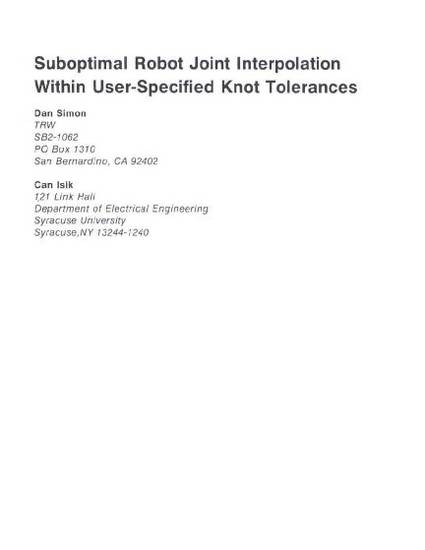
Approximation of a desired robot path can be accomplished by interpolating a curve through a sequence of joint-space knots. A smooth interpolated trajectory can be realized by using trigonometric splines. But, sometimes the joint trajectory is not required to exactly pass through the given knots. The knots may rather be centers of tolerances near which the trajectory is required to pass. In this article, we optimize trigonometric splines through a given set of knots subject to user-specified knot tolerances. The contribution of this article is the straightforward way in which intermediate constraints (i.e., knot angles) are incorporated into the parameter optimization problem. Another contribution is the exploitation of the decoupled nature of trigonometric splines to reduce the computational expense of the problem. The additional freedom of varying the knot angles results in a lower objective function and a higher computational expense compared to the case in which the knot angles are constrained to exact values. The specific objective functions considered are minimum jerk and minimum torque. In the minimum jerk case, the optimization problem reduces to a quadratic programming problem. Simulation results for a two-link manipulator are presented to support the results of this article.
